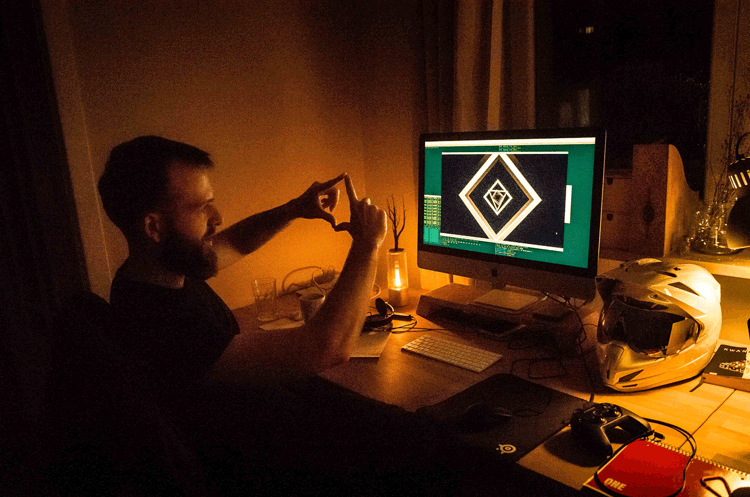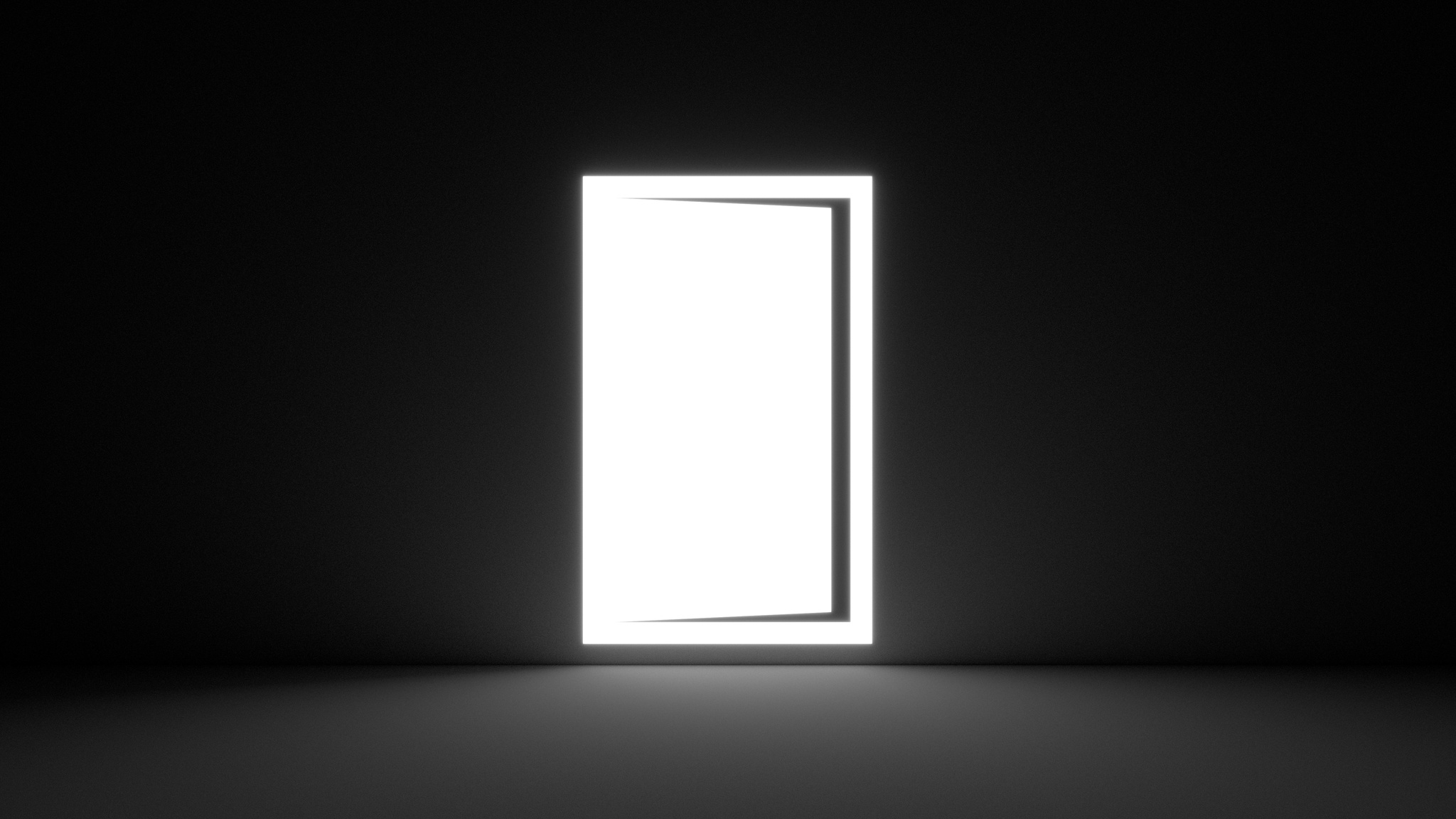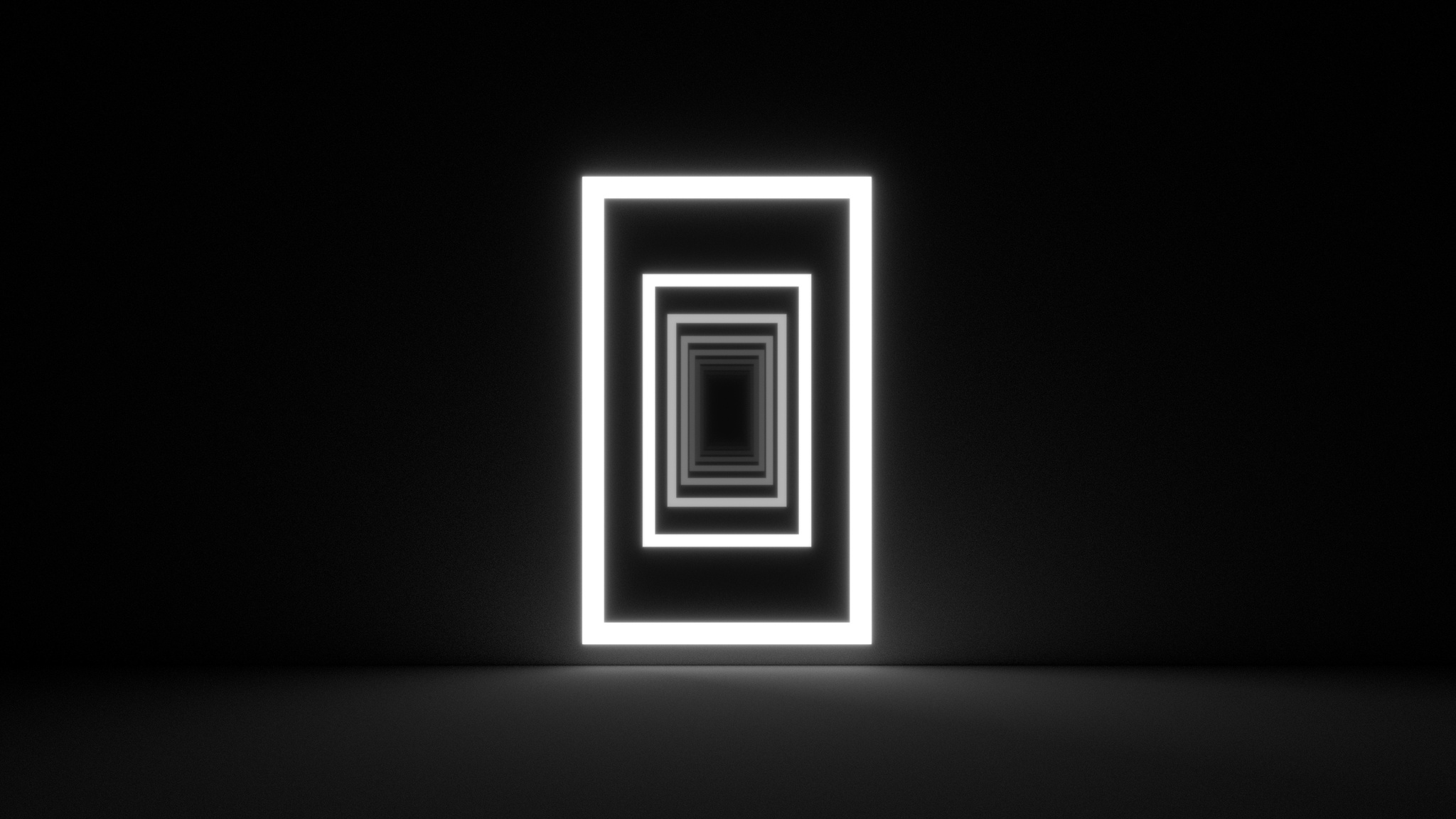Drzwi is an animation based on a dream I had recently.
I’m not a fan of descriptions that tell you what you should see or feel, but I can tell you that in the dream I opened a door in a dimly lit narrow apartment and walked down an underground corridor that slowly became more abstract as I noticed I’m no longer walking but falling.
I created this animation procedurally in Python and Blender. A few months after making the video I created audio, also procedurally, in Python and VCV Rack. I wrote about it in a separate post.
To make this project I had to extend my tools with ability to move the camera and change material properties in Blender. Turns out, it’s hard to get camera movement and timing right. I suspect it’s difficult in the real world as well, but I felt it very strongly when working on it in code: tweaking timing, curves, and noise of different movements by tenths of a second makes the difference between a shot that feels movie-like and something that looks completely artificial. In the end I decided to remove all instances of looking around, partly because they were difficult to get exactly right, but also because they didn’t work well in the loop format: camera movement was interesting on the first watch, but distracting on the next one.
A more technical aspect I had to deal with was rendering time. First of all I removed from the scene all objects that ware too far away from the camera, but the most significant improvement came when I made the number of samples dependent on the velocity of the camera: the faster it falls, the noisier the frame. It gives higher quality frames when you have time to watch the light on the wall and the floor, while also making the middle section of the animation substantially faster to render because you’re less likely to notice any noise or grain on objects that you’re quickly flying past.
The final thing that I want to mention that’s a bit unusual about my code is that it’s stateless: each frame is generated independently and could be rendered in any order. (In practice I render them sequentially to be able to preview the animation before all frames are done, but I can start at any point.) This is possible because all movement is described by formulas instead of being simulated numerically.
I don’t track time but the whole project took a few weekends from start to finish. And about a week (sic!) to render in the final quality in 1080p60. (Aren’t you a fan of fan noise?)
To wrap this post up, here’s me working on the thing:

And here are a few frames rendered in 5k that I posted on Instagram:


